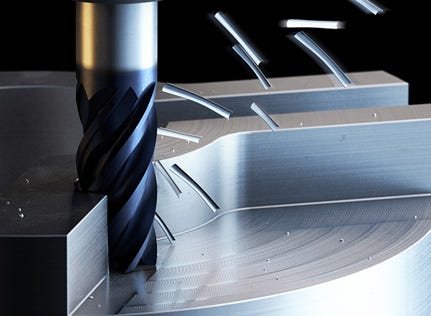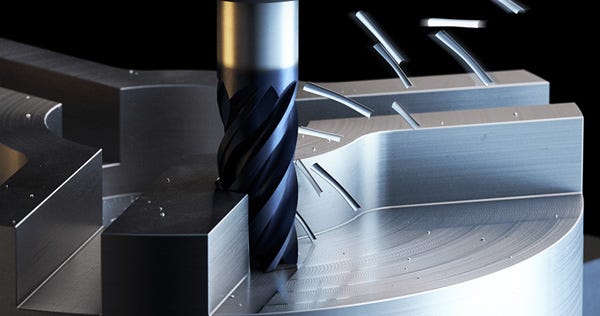Don't have an account?
Creating an account has many benefits: check out faster, keep more than one address, track orders and more.


AN EXPERT GUIDE TO MACHINING STAINLESS STEEL
Our Experienced Technical Engineer Tom answers all common questions about Stainless Steel including machining tips and the best drills, cutters and taps for machining Stainless Steel.
What is Stainless Steel?
Stainless steel is an alloy (mixture of elements) mainly made from carbon and iron; It also contains chromium. For steel to be considered as stainless steel, it must contain at least 10.5% chromium.
Stainless steel metal does not rust as easily as ordinary steel, nor does it stain or corrode. Most stainless steels are made from recycled steel, and once this happens its qualities do not deteriorate which means it can be continuously reused.
What are the different types & grades of Stainless Steel?
The four main types of stainless steel include: austenitic, martensitic, ferritic & duplex.
1. Austenitic - The most common type of stainless steel. These tend to be non-magnetic. They have a high amount of chromium content and harder to machine.
2. Martensitic - The least common type of alloy. This stainless steel has high carbon contents, which allow them to be tempered and hardened.
3. Ferritic - Ferritic stainless steel is magnetic and is often less expensive due to reduced nickel.
4. Duplex – This is an alloy that is half austenitic and half ferritic. This alloy is also magnetic and provides superior strength and corrosion resistance.
There are over 150 grades of stainless steel!
There are different grades and surface finishes, depending on where stainless steel is used. Different stainless steels have certain amounts of metals in them, and they are suited for all types of purposes. Grades of stainless steel are generally categorised into different series:
200 Stainless Series – These contain 201, 202, 244 and more.
The 200 series of stainless steel is an austenitic alloy containing low amounts of nickel. It is non-magnetic and has low corrosion resistance. It is mainly used for general purpose metalwork.
300 Stainless Series -These contain: 303, 304, 316, 321 and more.
The 300 series of stainless steel is mainly austenitic, and these grades are quite versatile. 304, also known as A2 is the most commonly used austenitic stainless steel. It contains high amounts of chromium and nickel which give 304 stainless steel excellent corrosion resistance. It is also magnetic. Grade 316 has high amounts of nickel and chromium. A big difference is that 316 contains a significant amount of molybdenum.
400 Stainless Series -These contain: 403, 405, 410, 416, 420 and more.
The 400 series stainless steel has a high carbon content. This provides high wear resistance and strength. This series can be hardened by heat whereas 300 series grades cannot. They are also much stronger and more magnetic. Grade 410 is the most used of the 400 series.
What do I need to look out for when machining Stainless Steel?
There are many factors to consider when machining stainless steel, particularly because this material is more challenging than standard steel and also materials with a higher alloy content are generally more difficult too.
One crucial thing to consider when machining stainless steel is to watch out for rubbing brought on by tool chatter (machine vibration). This is due to the exceptionally hard characteristics of the material, therefore it is important that the machine and tooling used are correct for the application.
This leads us nicely on to the machine itself. A CNC machine is usually considered to be faster and more cost effective than a manual machine which is generally a requirement of optimal stainless steel machining. You should always machine stainless steel at the required surface feed and speeds, therefore researching the cutting data of the tooling you will be using is always advised before purchasing a machine; just so you aren’t limiting your capabilities. Machining using the correct data will ensure the best performance and tool life whilst reducing the risk of any damage or breakages.
Tool selection is essential. Steel itself can be difficult, therefore Stainless Steel requires even more thought and planning in selecting the proper tool to avoid any issues. Due to the potential issues surrounding vibration (chatter), a variable helix tool should always be considered. The special design can create something called ‘silent machining’ thus improving surface finish.
Some stainless steels, such as austentic, can form long spiral swarf which can cause a build up and be difficult to remove. To prevent the problem occurring in the first place, we would advise a tool with a chip breaker to keep the size of the swarf to a minimum.
A sharp cutting edge should also be at the forefront when machining stainless steel because it increases accuracy and ensures a smoother cut into the material. Re-sharpening should be done as soon as possible after any slight sign of deterioration.
When choosing between a HSS or a Carbide tool for stainless steel there are a few things to consider. Machine capability is one thing and if you are limited on speeds and feeds then a HSS tool should be used. However, if your machine can run at higher speeds and feeds then carbide would be advised. If your carbide tools are prone to chipping then a powder metal substrate would be suitable due to them having the toughness of HSS but running at higher cutting data.

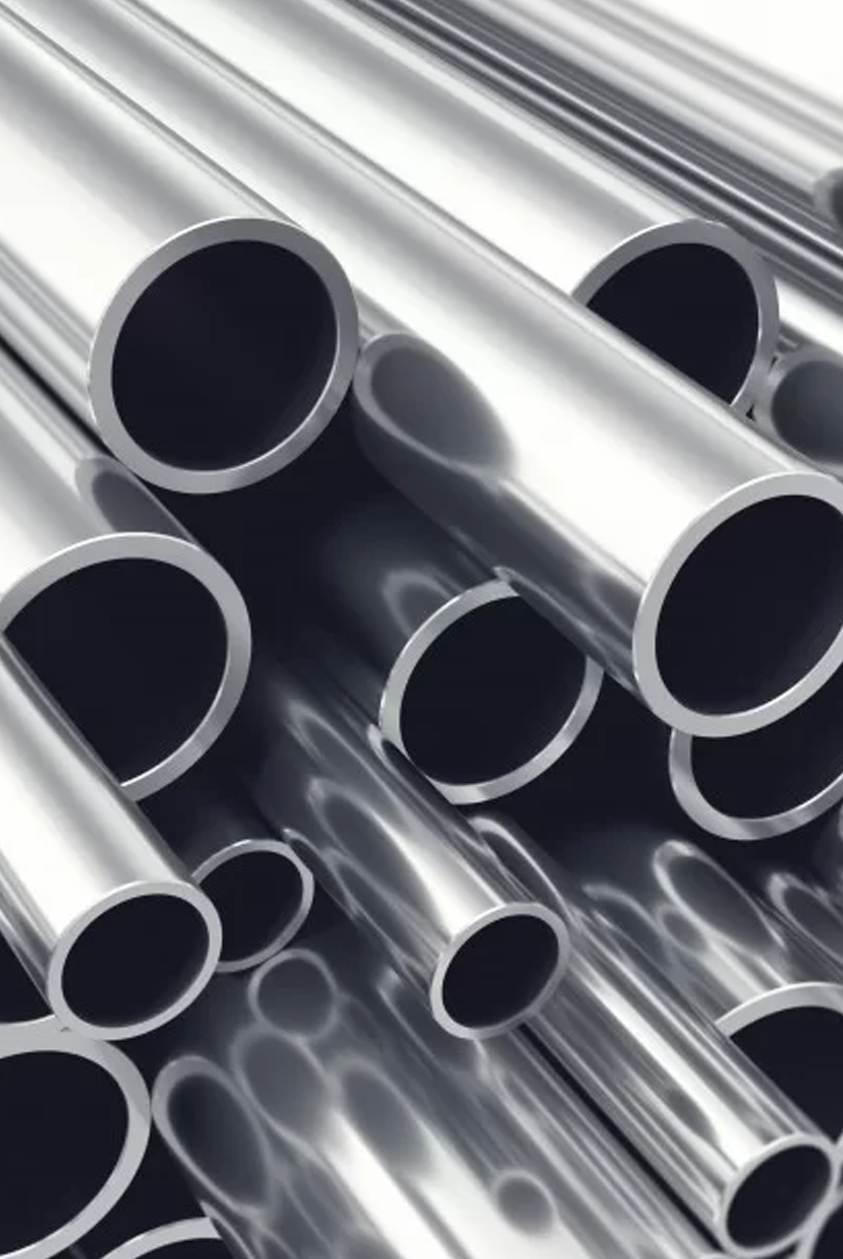
Should you use coolant when machining Stainless Steel?
Cutting fluids should be used when machining stainless steel. The reason for this is that it can lead to overheating, which in some cases can reduce the required corrosion resistance of the material. Work hardening can also be an issue where the heat generated from friction can cause the material to harden, thus making it more difficult to machine.
The cooling characteristics of a cutting fluid are most important when machining stainless steel however coolant does also reduce tool wear and help keep the swarf away from the job.
Coolant which has a high oil content is always good to use on stainless steel because of it being considered a sticky material (similar to aluminium).
Is Stainless Steel Hard or Tough?
Stainless steel is considered to be a soft metal, which means that it’s not great for heavy duty applications. It can still be hard to machine due to its toughness and durability, therefore needs the right techniques and tools to machine efficiently.
What industries & applications are Stainless Steels mainly used in?
Stainless steel can be used in a variety of industries due to its rust-resistance, corrosion resistance and heaviness.
In the automotive industry Stainless Steel has been used since the 1930’s for producing exhaust systems, grills and trims. Modern technologies now also allow manufacturers to also produce structural automotive components too.
In Aerospace the ability of stainless steel to withstand extreme temperatures and it’s resistance to rust means it is used in the frames and engines of an aeroplane. The strength and rigidity of stainless steel also makes it ideal for handling a planes weight, therefore the aviation industry use it to produce landing gear.
Despite stainless steel being used in demanding environments, the intricacies of the medical industry also benefit from its characteristics. Surgical and dental instruments as well as implants (replacement joints and artificial hips) are all made from stainless steel. It can also be used to build operation tables, MRI scanners and plates to repair broken bones.
Stainless Steel is also used in a wide range of other industries including the building trade, food and catering industry and in nuclear applications.
Stainless Steel Vs Steel
Mild steel is alloyed using carbon whereas stainless steel has a chromium element.
The chromium properties make Stainless Steel more resistant than Steel to rusting, staining or corrosion. It is also typically non-magnetic.
Stainless steel is also generally harder, meaning it is less malleable with lower thermal conductivity and heat distribution.
Stainless Steel Vs Cast Iron
Cast Iron and Stainless Steel share a lot of similarities; they are both durable and versatile.
But, cast iron is typically easier to machine and a harder material.
Cast Iron is also more prone to corrosion and rust than Stainless Steel however it does have better anti-vibration properties which makes it less complex to machine.
Stainless Steel Vs Cast Iron
There are many crossovers between an exotic material and stainless steel due to the fact that the base material of exotics can in fact be Stainless Steel itself, such as Super Duplex.
Exotic materials tend to have a higher temperature resistance than Stainless Steel. The combination of a range of chemical properties involved in exotic materials also make them stronger, with better corrosion and acid resistance.
Stainless Steel Vs Aluminium
Stainless Steel is harder than aluminium providing extra strength. However, it has low conductivity and isn’t very malleable.
Aluminium is a lightweight material, meaning the strength behind stainless steel makes it much heavier. Around 2 thirds heavier in fact.
Stainless steel is much more complex to cut than Aluminium due to its higher resistance to wear and abrasion.
What are the best Machine Taps for Stainless Steel?
Cutwel’s Inox tap range is specially designed for coping with the demands of stainless steel. Our Machine Taps for Stainless Steel (Inox) result in reduced friction, have low torque and offer the most reliable performance. With a variety of thread forms available, including Metric Coarse, Metric Fine, UNC (Unified National Coarse), UNF (Unified National Fine) and BSP(G) (British Standard Pipe). Optional through coolant taps are available with radial flow for through holes and axial flow for blind holes.
Besides the Inox tap range, Cutwel also offer YG-1’s Prime-X Coated Machine Taps which are also excellent for stainless steel tapping. Providing extremely high cutting speeds and increased tool life, these taps give high and reliable performance on a wide range of materials. With highly improved wear resistance and a patented special geometry which prevents tap failure due to overfeeding.
What are the best milling tools for Stainless Steel?
Cutwel have the UK’s largest range of Milling Cutters, with ranges available for every application, material, size & performance.
For Stainless Steel milling we have the perfect range from low cost to high performance.
The number one cutter I would recommend for machining stainless steel is the V7 Plus. This range provides extreme tool life and gives excellent performance when finishing or roughing. The V7 plus has an advanced YG1200 coating which means it can withstand temperatures of up to 1200 °. It has a multiple helix geometry which allows for larger depths of cut and higher feed rates. As well as this, the V7 Plus also features a variable helix and unequal flute spacing. The benefit of this is zero vibration for an exceptional surface finish. There are also 2 advanced geometries of V7 plus; the TRP range for trochoidal milling and the Chip splitter which creates shorter chips (ideal for longer chipping swarf from austenitic stainless steel) to enable double the length of cut as the standard V7 plus range.
The V7 Inox is another excellent range for machining stainless steel. The special TiALN coating helps offer excellent wear and heat resistance when machining tricky materials such as 303, 304 and 316 stainless grades. The V7 inox also has a variable helix for vibration free milling with excellent tool life.
Titanox milling cutters are the go to range for Stainless Steel based exotic materials as well as Stainless Steel itself and Titanium. It features a unique double core geometry. This helps with chip flow and protects the flutes from clogging when machining. A range which hugely improves end milling and slotting operations. Similar to the V7 Plus, Titanox also includes the heat resistant Y1200 coating which offers high feed rates, large depths of cut and excellent tool life.
The Jetpower range is a high performance option, suitable for when you have a lightweight machine or have power limitations. It is made from ultra-fine micrograin carbide making it super wear resistant. If you have a manual machine, this provides great performance when you have vibration. It creates very low cutting forces, providing excellent surface finish and chip control.
At the lower end of the budget, some General Purpose Milling Cutters are suitable for milling Stainless Steel. These include our K2 Carbide range from YG-1 or the low cost Mammut Milling Cutters, both of which are available in a wide range of geometries for a range of applications.
What are the best turning tools for Stainless Steel?
Whether roughing, finishing or a bit of both, Cutwel provide a range of dedicated high performance grades and chipbreakers for stainless steel turning applications. We supply the UK’s largest range of Carbide Turning inserts and CBN Turning Inserts from global leading manufacturers Korloy and YG-1.
Korloy’s Range of Turning Inserts feature a huge range of application specific turning inserts for stainless steel; the dedicated Inox range includes:
- A super CVD UNC805 grade for high speed continuous machining of stainless steel and duplex
- A hard wearing NC9125 grade for medium to high speed turning of stainless steel
- An ultra tough NC9135 grade for medium to low speed turning of stainless steel
Korloy also offer Stainless Steel turning options for heavy turning (large depths of cut), sliding head lathes and fine finishing.
YG-1 Turning Inserts offer a lower cost range but are still considered a performance option with material specific grades. The YG213 grade is a for medium to high speed continuous & light intermittent turning. The YG214 grade is tougher for low speed rough and heavy intermittent turning.
How do I improve my Stainless Steel machining process?
In summary, when machining Stainless Steel, the key is to be quick. You can run the danger of work hardening your material if you take too long, which could result in early tool failure.
Modern Stainless-steel cutters, now have special geometries such as corner edge preparation and multiple/variable helix with uneven flute spacings. These features can lead to much better tool life and can improve performance greatly.
When selecting the best tooling for stainless steel, it is important to also consider other aspects such as the tool holders that will be used. This can mean moving away from standard ER Collet Chucks and moving to other high-performance holders, such as a Hydraulic Chuck. By doing this, it can improve the surface finish and massively reduce cycle times.
For expert advice on anything related to stainless steel machining, please contact us by filling in the form below!
Shop Stainless Steel Machining...
Stainless Steel (Inox) Carbide Drills
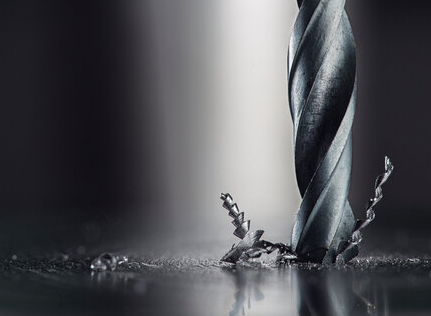
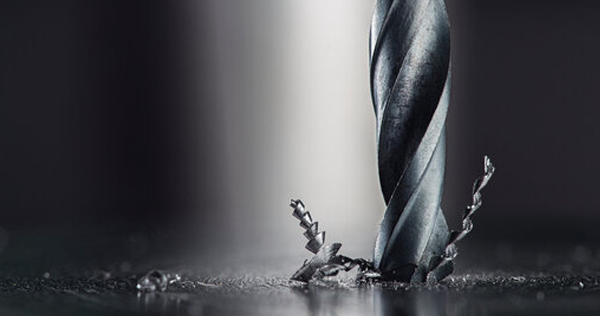
Through coolant INOX carbide drills designed for high performance drilling of Stainless Steel.
Machine Taps for Stainless Steel
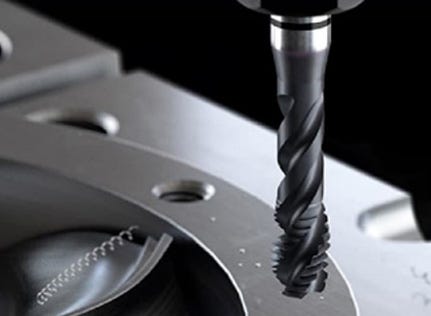
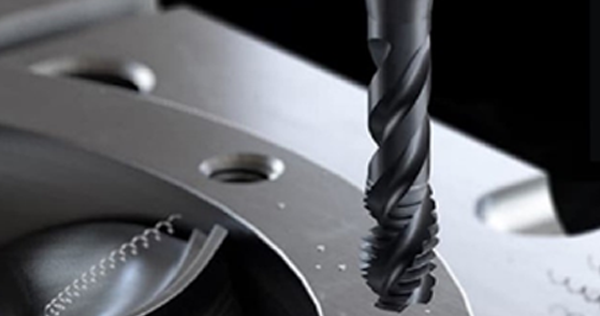
The INOX tap range is specially designed for Stainless Steel and result in reduced friction.


